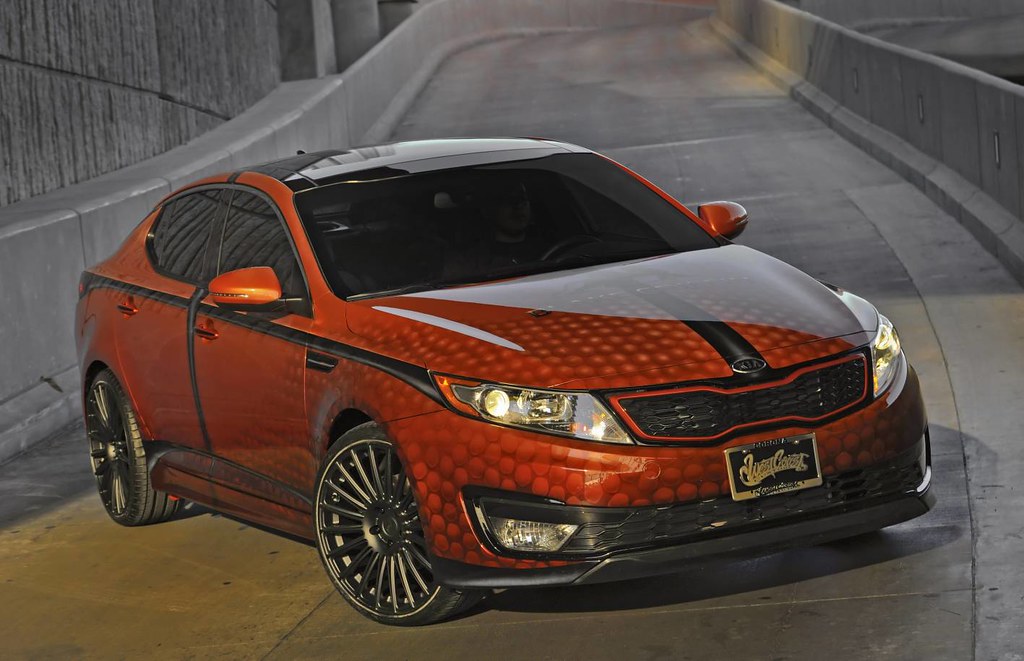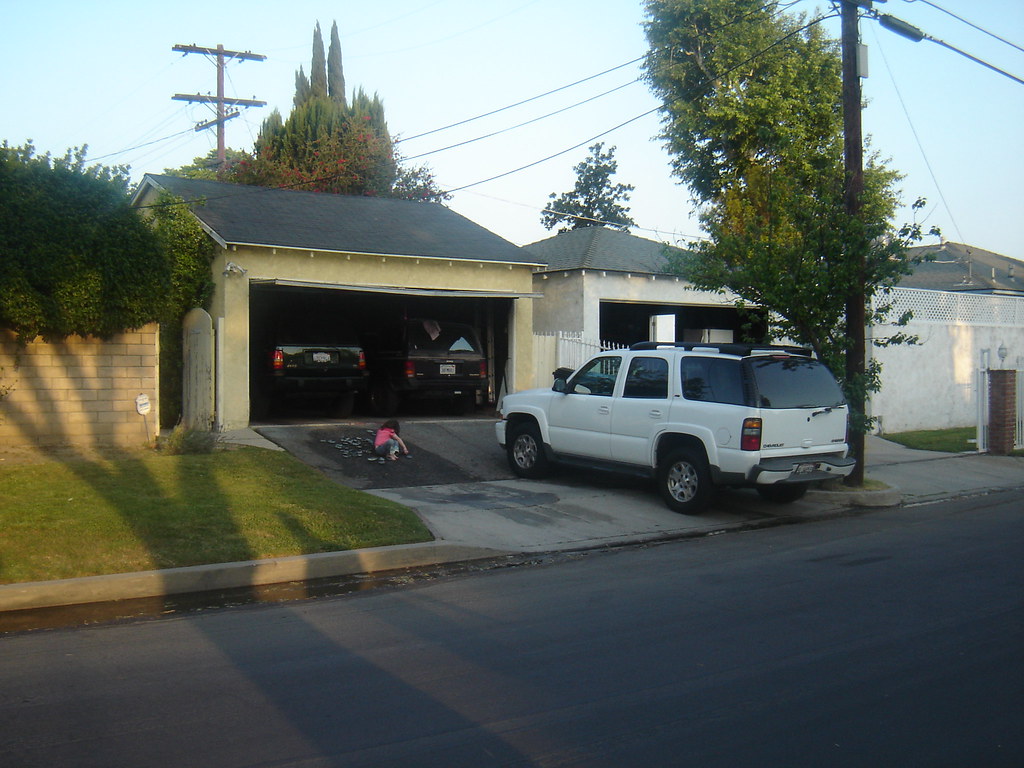
SUVs have firmly established themselves as the vehicle of choice for countless individuals and families. They offer an unparalleled combination of space, practicality, and the robust capability needed to navigate diverse road conditions. However, the market is vast, and not all SUVs are engineered to the same demanding standards. While some models effortlessly accumulate over 200,000 miles, others unfortunately begin to show significant signs of wear and tear far sooner, sometimes within just a few years of ownership. For consumers operating on a tight budget, selecting the right SUV becomes even more critical, as the wrong choice can quickly transform into a costly “money pit” rather than a dependable family hauler.
This comprehensive article aims to provide a clear, data-driven perspective on the longevity and real-world reliability of various affordable SUV models. We will systematically break down specific models known for their exceptional durability, those resilient vehicles that truly stand the test of time, even after years of strenuous use. Conversely, we will also shed light on several SUVs that, despite appearing to be initial bargains, tend to succumb to premature failure due to issues ranging from subpar build quality and inherent design flaws to consistently poor reliability track records.
Our evaluation extends beyond mere brand recognition or fleeting popularity trends. Instead, we delve into concrete metrics such as real-world reliability assessments, documented repair frequencies, and invaluable feedback gleaned directly from owners who have experienced these vehicles firsthand over extended periods. If you are currently in the market for a used vehicle and your priorities include securing a dependable mode of transportation that will neither deplete your savings nor leave you stranded with frequent breakdowns, then this detailed analysis is precisely what you need. We are prepared to identify these models by name, empowering you to make a truly informed purchasing decision focused on long-term value.
For many discerning buyers, the term “budget SUV” often conjures images of compromised quality or limited lifespan. Yet, this perception is far from the reality for a select group of vehicles. There exist numerous affordable SUVs that are not merely built cheaply, but rather meticulously engineered for enduring performance and remarkable durability. If your objective is to acquire a reliable ride that will reliably serve you for years, far beyond the 100,000-mile mark, without succumbing to expensive breakdowns, then you have arrived at the definitive resource.
The affordable SUVs highlighted here have consistently garnered an ironclad reputation for exceptional longevity. Their track records are distinguished by minimal maintenance requirements and an inherent dependability that positions them as exceptionally astute long-term investments. Each model represents a testament to engineering prowess focused on endurance, offering peace of mind to owners who prioritize unwavering reliability and sustained value over ephemeral trends. These vehicles are designed to perform reliably, ensuring that your investment continues to deliver utility and satisfaction for many years to come.
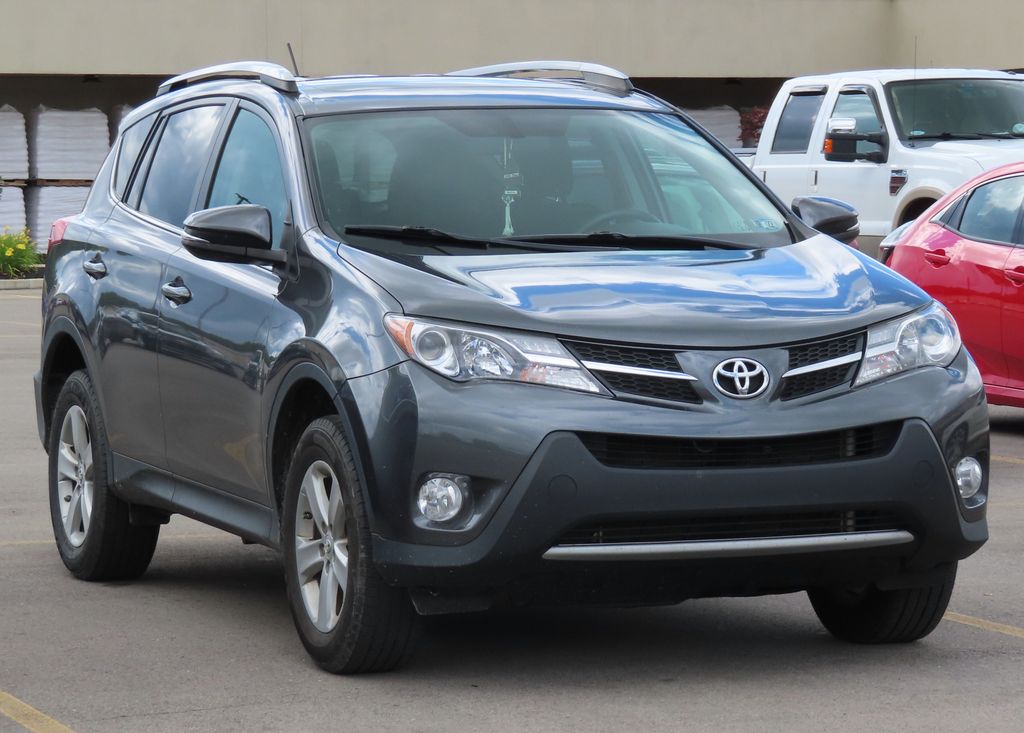
1. **Toyota RAV4 (Especially 2012–2018 Models)** Toyota’s esteemed reputation for uncompromising reliability is not a phenomenon that emerged coincidentally; rather, it is a direct result of models like the RAV4 consistently demonstrating exceptional endurance. This compact SUV embodies the essence of unwavering dependability, akin to a trusted companion who invariably arrives, irrespective of the prevailing conditions. Its fundamental design emphasizes simplicity, operational efficiency, and a predictable performance that, while perhaps not overtly exciting, is undeniably reassuring in its consistency. Particularly, the 2012–2018 model years stand out for their pragmatic approach, featuring a straightforward 4-cylinder engine and a remarkably smooth automatic transmission, which collectively ensure a virtually drama-free ownership experience.
It is not an uncommon occurrence for owners of these RAV4 models to surpass the 250,000-mile threshold without encountering significant mechanical issues. This impressive longevity is not an exceptional anomaly; rather, it represents a standard expectation for this vehicle. The RAV4’s inherent durability is rooted in its robust frame construction, a meticulously proven powertrain system, and a deliberate absence of overly complex or superfluous features that could become potential points of failure over time. Its design philosophy prioritizes foundational strength and reliability, ensuring that core components are built to withstand extensive use.
Furthermore, the practical advantages of the Toyota RAV4 extend to its economic ownership. Replacement parts are readily available and typically affordable, while routine maintenance procedures are remarkably straightforward, negating the necessity for specialized mechanical expertise to keep the vehicle in prime operational condition. While it may not be heralded as the most aesthetically cutting-edge SUV on the market, it proficiently executes fundamental requirements: offering commendable fuel economy, providing a comfortable ride quality, and boasting ample cargo space to accommodate diverse needs, from routine grocery runs to more substantial hauling tasks. Used models, when properly maintained, can frequently be acquired for less than $15,000, presenting an exceptional value proposition for those prioritizing long-term financial prudence. For any consumer whose primary criterion is an unwavering commitment to reliability, the Toyota RAV4 remains an irrefutable choice that consistently delivers on its promise of enduring dependability.
Car Model Information: 2025 Toyota RAV4 XLE Premium
Name: Toyota RAV4
Caption: 2019 Toyota RAV4 LE AWD (AXAA54, US)
Manufacturer: Toyota
Aka: unbulleted list
Production: 1994–present
Class: Compact crossover SUV
Layout: unbulleted list
Categories: 2000s cars, 2010s cars, 2020s cars, All-wheel-drive vehicles, All articles with unsourced statements
Summary: The Toyota RAV4 (Japanese: トヨタ・RAV4, Hepburn: Toyota Ravufō) is a compact crossover SUV produced by the Japanese automobile manufacturer Toyota. It is known for starting the wave of compact crossovers. The RAV4 is one of the best-selling SUVs of all time. By February 2020, a total of 10 million RAV4s had been sold globally. In February 2025, the RAV4 replaced the Ford F-150 as the top selling car in the United States, after nearly four decades of the F-150’s reign.
It made its debut in Japan and Europe in 1994, and in North America in 1995, being launched in January 1996. The vehicle was designed for consumers wanting a vehicle that had most of the benefits of SUVs, such as increased cargo room, higher visibility, and the option of full-time four-wheel drive, along with the maneuverability of a mid-size car. The vehicle’s name is an abbreviation of “Recreational Active Vehicle with 4-wheel drive”, or “Robust Accurate Vehicle with 4-wheel drive”, although not all models come equipped with the four-wheel drive system.
For the third-generation model, Toyota offered both short- and long-wheelbase versions of the RAV4. Short-wheelbase versions were sold in Japan and Europe; long-wheelbase versions in Australia and North America. Toyota of Japan also sold the longer-wheelbase version as the Toyota Vanguard (Japanese: トヨタ・ヴァンガード, Hepburn: Toyota Vangādo) at Toyopet Store dealership chain from 2005 through 2016. RAV4 for the Japanese market were sold at two different Toyota dealership chains, Corolla Store and Netz.
Get more information about: Toyota RAV4
Buying a high-performing used car >>>
Brand: Toyota Model: RAV4
Price: $36,424 Mileage: 12 mi.
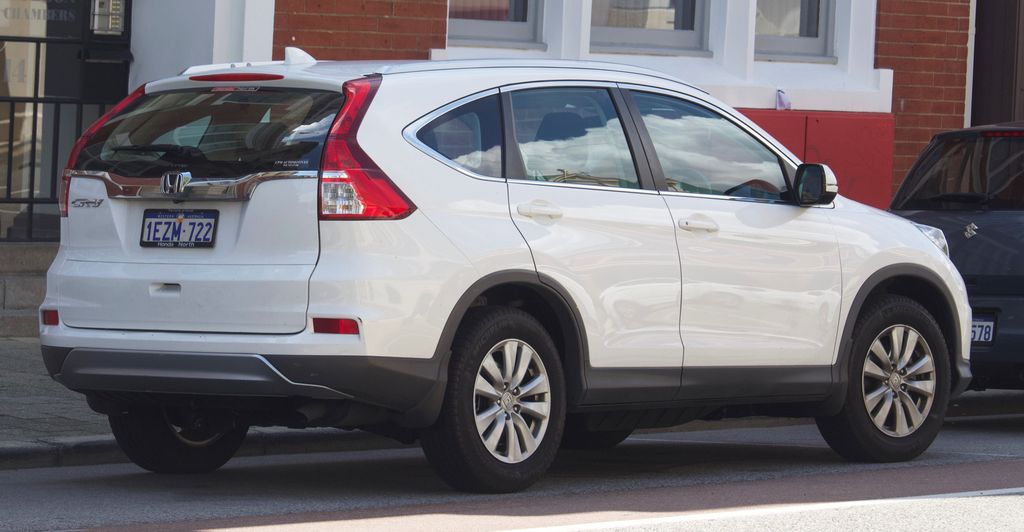
2. **Honda CR-V (2007–2016 Models)** The Honda CR-V stands as a testament to Honda’s engineering excellence, often regarded as the equally reliable counterpart to Toyota’s formidable RAV4. These vehicles exhibit an extraordinary resilience, earning a reputation for near-indestructibility in the automotive landscape. It is a common testament from owners that their CR-Vs effortlessly achieve and exceed 200,000 miles, often with nothing more than adherence to routine, basic maintenance schedules. A significant advantage for budget-conscious consumers is their sustained affordability within the used vehicle market, making them an accessible option for long-term value.
For optimal reliability and consistent performance, the 2007–2016 model years of the CR-V are particularly recommended. Within this range, the 2.4-liter 4-cylinder engine proves to be an undeniable workhorse, celebrated for its enduring robustness and efficiency. Complementing this powertrain is a transmission system that consistently delivers smooth and dependable operation, contributing significantly to the vehicle’s overall reliability profile. While the CR-V is not engineered to deliver exhilarating, high-performance driving dynamics, it consistently fulfills its fundamental promise: reliably starting each day, regardless of the prevailing weather conditions, providing peace of mind to its owner.
Beyond its mechanical fortitude, the Honda CR-V is thoughtfully designed with a strong emphasis on practicality and user-friendliness. Its rear seating configuration offers the versatility of folding completely flat, thereby expanding the cargo area into a remarkably spacious and highly functional load-carrying compartment. Moreover, the vehicle’s design ensures top-notch visibility for the driver, enhancing safety and maneuverability. A distinct advantage of owning a Honda is the vast and robust aftermarket support system, coupled with extensive availability of parts. This expansive network significantly mitigates the potential financial burden and logistical inconvenience should repairs become necessary, making ownership more manageable and less stressful in the long run. Primary complaints typically revolve around minor, non-catastrophic issues, such as standard suspension wear over time or occasional air conditioning system anomalies. These are generally manageable concerns, not indicative of systemic failures. Consequently, a CR-V that has received diligent and consistent servicing is poised to provide many years of low-maintenance driving, solidifying its status as one of the most secure investments for those seeking an affordable SUV that will reliably endure far beyond the 150,000-mile mark without transforming into a burdensome money pit.
Car Model Information: 2017 Honda CR-V EX-L
Name: Honda CR-V
Caption: 2023 Honda CR-V e:HEV
Manufacturer: Honda
Aka: Honda Breeze (China, 2019–present)
Production: 1995–present
Class: Compact crossover SUV
BodyStyle: Sport utility vehicle
Layout: Front-engine, front-wheel-drive layout,Front-engine, four-wheel-drive layout
Chassis: Unibody
Predecessor: Honda Crossroad
Successor: Honda ZR-V
Categories: 2000s cars, 2010s cars, 2020s cars, All-wheel-drive vehicles, All articles containing potentially dated statements
Summary: The Honda CR-V (also sold as the Honda Breeze in China since 2019) is a compact crossover SUV manufactured by Japanese automaker Honda since 1995. Initial models of the CR-V were built using the same platform as the Civic.
Honda began producing the CR-V in Sayama, Japan, and Swindon, United Kingdom, for worldwide markets, adding North American manufacturing sites in East Liberty, Ohio, United States, in 2007; El Salto, Jalisco, Mexico, in late 2007 (ended in early 2017); Alliston, Ontario, Canada, in 2012; and Greensburg, Indiana, United States, in February 2017. The CR-V is also produced in Wuhan for the Chinese market by Dongfeng Honda, and also marketed as the Breeze in China for the version produced at Guangzhou by Guangqi Honda.
Honda states that “CR-V” stands for “Comfortable Runabout Vehicle,” while the term “Compact Recreational Vehicle” was used in a British car review article that was republished by Honda, associating the model name with the Sports Utility Vehicle abbreviation of SU-V.
As of 2022, the CR-V is positioned between the smaller ZR-V (marketed as HR-V in North America) — with which the CR-V shares a platform — and the larger North American market Passport/Pilot or the Chinese market Avancier/UR-V. It is currently Honda’s best-selling vehicle in the world, and the second best-selling SUV globally in 2020.
Get more information about: Honda CR-V
Buying a high-performing used car >>>
Brand: Honda Model: CR-V
Price: $19,972 Mileage: 77,333 mi.
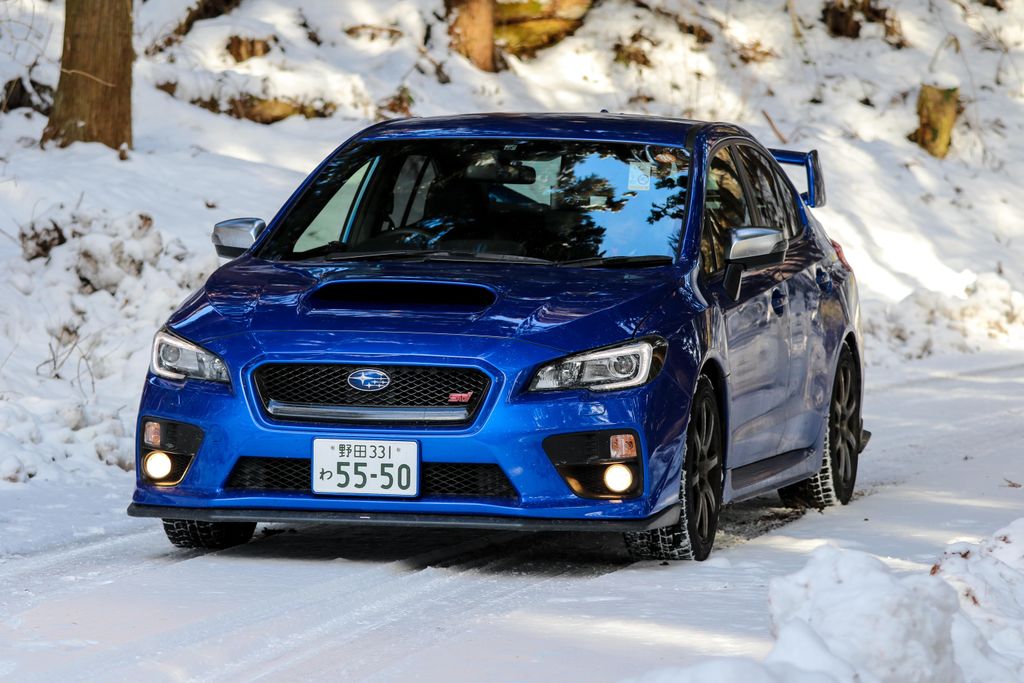
3. **Subaru Forester (2010–2018 Models)** The Subaru Forester, while possessing its own distinctive characteristics, is unequivocally engineered with an impressive degree of robustness, often likened to the resilience of a tank when meticulously cared for. This SUV presents an ideal solution for individuals who seek a highly practical vehicle equipped with advanced all-wheel drive capabilities and demonstrable real-world durability. Its design philosophy clearly prioritizes enduring performance and utility, making it a compelling choice for a wide range of driving conditions and lifestyles.
The model years spanning 2010 to 2018 represent a particularly opportune period for the Forester, striking an optimal balance between functional simplicity and impressive capability. The engines within this range, especially the non-turbocharged 2.5L variants, are renowned for their inherent solidity and reliability, provided they adhere to consistent maintenance schedules. Furthermore, the symmetrical all-wheel drive system, a hallmark of Subaru engineering, is widely recognized as one of the most sophisticated and effective systems available outside of dedicated luxury SUVs. This advanced AWD system contributes significantly to the vehicle’s exceptional traction and stability, particularly in challenging environments.
Owners benefit from the Forester’s rugged versatility, which is complemented by a remarkably generous cargo capacity, making it highly adaptable for various hauling needs. The interior, while practical, also offers a surprisingly comfortable environment for occupants. This combination renders the Forester exceptionally well-suited for navigating snowy climates, embarking on weekend camping excursions, or simply handling daily errands with absolute confidence in the vehicle’s capability. It is worth noting that some earlier models were associated with head gasket concerns, an issue that Subaru proactively addressed and rectified in subsequent production years. Provided that routine oil changes are diligently performed and the vehicle is not subjected to neglect, the Forester consistently demonstrates an impressive capacity for sustained operation, effortlessly accumulating high mileage figures. For outdoor enthusiasts, or those residing in regions where road conditions frequently become challenging, the Subaru Forester stands out as an exceptionally dependable long-term SUV, delivering robust performance without imposing undue financial strain.
Car Model Information: 2024 Subaru Forester Wilderness
Name: Subaru Forester
Manufacturer: Subaru
Production: 1997–present
Class: Compact crossover SUV
BodyStyle: SUV
Related: Subaru Impreza
Layout: Front-engine, all-wheel drive
Predecessor: Subaru Bighorn
Categories: 2000s cars, 2010s cars, All-wheel-drive vehicles, All Wikipedia articles written in American English, All articles containing potentially dated statements
Summary: The Subaru Forester (Japanese: スバル・フォレスター, Hepburn: Subaru Foresutā) is a compact crossover SUV that has been manufactured by Subaru since 1997. The first generation was built on the platform of the Impreza in the style of a taller station wagon, a style that continued to the second generation, while the third-generation model onwards moved towards a crossover SUV design. A performance model was available for the second-generation Forester in Japan as the Forester STi.
Get more information about: Subaru Forester
Buying a high-performing used car >>>
Brand: Subaru Model: Forester
Price: $31,988 Mileage: 16,572 mi.
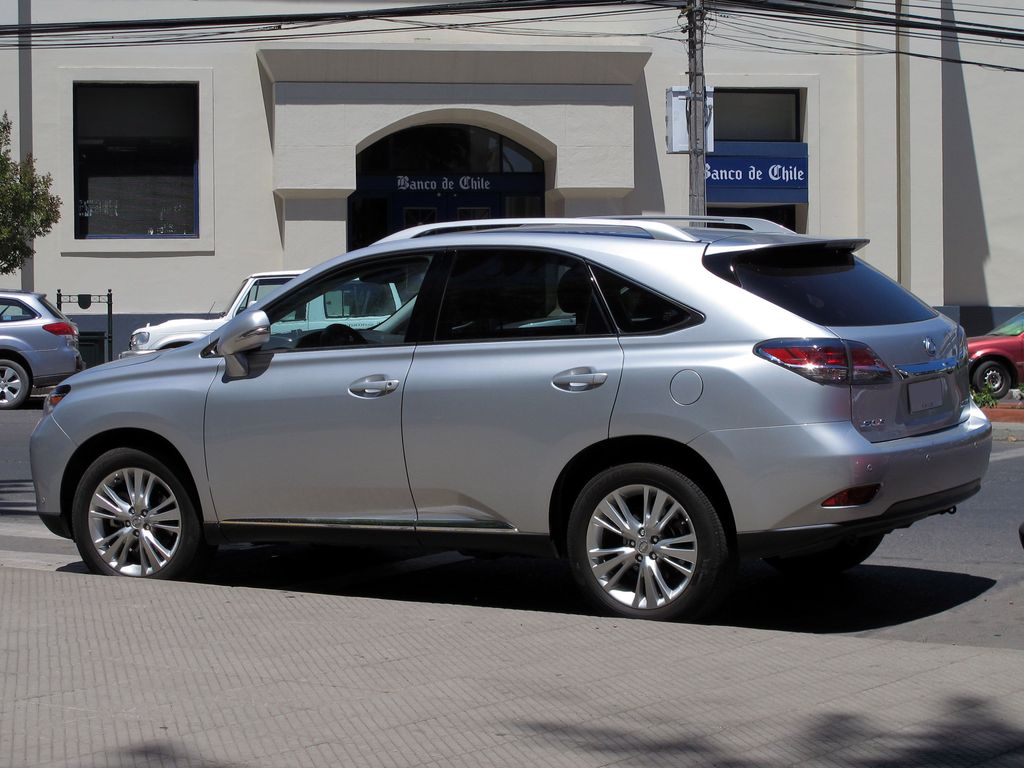
4. **Lexus RX 350 (2009–2015 Models)** While the brand name “Lexus” typically evokes images of premium luxury and corresponding price tags, the used market for the RX 350 often reveals a surprising affordability, making it an accessible option for discerning buyers. When evaluated on the crucial metric of durability, this particular model is, by all accounts, exceptionally resilient—verging on what many would describe as “bulletproof.” It represents a remarkable fusion of luxury and unyielding reliability.
The inherent durability of the RX 350 is deeply embedded within the same robust engineering principles that define Toyota’s legendary reliability. However, Lexus takes this foundation further, enhancing the driving experience with a noticeably smoother ride quality, the integration of superior interior materials, and a curated selection of refined luxury amenities. Powering this capable SUV is the 3.5-liter V6 engine, widely regarded as one of the most consistently dependable powertrains available on the market. With diligent adherence to basic maintenance protocols, this engine is designed to perform reliably for an exceptionally extended period, accumulating vast mileage with unwavering consistency.
In stark contrast to many other luxury SUVs that frequently burden their owners with exorbitant repair costs and temperamental electronic systems, the Lexus RX 350 distinguishes itself by being remarkably straightforward and cost-effective to own over the long term. Its design avoids excessive complexity, prioritizing functional longevity. Even after accumulating well over 150,000 miles, these vehicles retain a tangible sense of solidity, a quiet cabin environment, and an enduring level of comfort that belies their age and mileage. While it is true that its fuel economy may not be a standout attribute, this is arguably the sole notable drawback in an otherwise exceptional vehicle. Securing a well-maintained RX 350 with comprehensive service records for under $15,000 constitutes a truly advantageous acquisition. In essence, the Lexus RX 350 offers the refined experience of a luxury SUV without the typical anxieties associated with potentially prohibitive repair expenses or persistent operational concerns, establishing itself as a consistently long-lasting, inherently classy, and remarkably budget-friendly choice.
Car Model Information: 2023 Dodge Challenger SRT Hellcat
Name: Lexus RX
Caption: Fifth generation Lexus RX 500h F Sport
Manufacturer: Toyota
Aka: Toyota Harrier
Production: December 1997 – present
ModelYears: 1998–present
Class: unbulleted list
BodyStyle: SUV
Layout: unbulleted list
Chassis: Unibody
Successor: unbulleted list
Categories: 2000s cars, 2010s cars, 2020s cars, All-wheel-drive vehicles, All Wikipedia articles written in American English
Summary: The Lexus RX (Japanese: レクサス・RX, Hepburn: Rekusasu RX) is a luxury crossover SUV sold since 1998 by Lexus, a luxury division of Toyota. Originally released in its home market of Japan in late 1997 as the Toyota Harrier, export sales began in March 1998 as the Lexus RX.
Considered as the first luxury crossover SUV, five generations of the RX have been produced to date, the first being compact in size, and the latter classified as mid-size. Both front- and four-wheel drive configurations have been used on the RX series, and several gasoline powertrain options, including V6 engines and hybrid systems, have been offered. In the Lexus model lineup, the RX sits below the larger Lexus LX (marketed as the Toyota Land Cruiser body-on-frame SUVs outside North America, respectively), and below the body-on-frame, but also mid-size GX SUV. The name “RX” stands for “Radiant Crossover”. It has also been labelled as “Recreational Cross Country” in some markets. The RX’s current Toyota counterpart is the Highlander/Kluger; past counterparts included the Harrier and Venza.
The first-generation RX 300, fitted with a 3.0-liter V6 engine, began sales in 1998. The Japanese market Harrier released in 1997 also offered a 2.2-liter inline-four, later uprated to 2.4 liters. The second-generation RX 300 (3.0-liter V6) and RX 330 (3.3-liter V6) models went on sale in 2003, with both variants supplanted by the more powerful RX 350 (3.5-liter V6) in 2006. Like the previous series, a 2.4-liter inline-four engine was sold alongside the 3.0-liter V6 in the Japanese market Harrier. In 2005, a hybridized gasoline-electric version of the 3.3-liter second-generation model was made available as the RX 400h in export markets and as the Harrier Hybrid in Japan. For the third generation released in 2009, both RX 350 (3.5-liter V6) and RX 450h (3.5-liter V6 hybrid) models were initially offered, with an entry-level RX 270 (2.7-liter inline-four) offered by Lexus in some Asian markets, including in Japan, since 2010. Since the release of the third generation, Japanese sales have occurred under the RX name as opposed to Harrier as had been the case previously. In the fourth generation, a turbocharged (2.0-liter inline-four) RX 200t/300 model was introduced to replace the previous 2.7-liter unit.
The RX has been assembled at Toyota Motor Kyushu since launch. The RX and RX Hybrid were the first Lexus models to be built outside Japan, with North American market versions produced at the Toyota Motor Manufacturing Canada plant in Cambridge, Ontario beginning 2003 (RX) and expanded in 2014 (RX Hybrid). Hybrid transaxles are built at the Kokura plant in Kitakyushu, Fukuoka since 2009.
Get more information about: Lexus RX
Buying a high-performing used car >>>
Brand: Lexus Model: RX 350
Price: $66,988 Mileage: 16,559 mi.
5. **Ford Escape (2012–2019 with 2.5L Engine)** This particular recommendation, the Ford Escape, may initially elicit a degree of surprise among some consumers. However, a closer examination reveals that the models equipped with the 2.5L naturally aspirated engine—distinct from the EcoBoost variants—possess a level of durability that is often significantly underestimated. This specific configuration of the Ford Escape stands as a testament to straightforward, reliable engineering.
The operational integrity of this Escape configuration lies in its inherent simplicity. It foregoes the complexities associated with turbocharged systems, eliminating the potential for common turbo-related failures, and avoids an overly intricate drivetrain architecture. What remains is a fundamentally robust 4-cylinder engine paired with a highly dependable 6-speed automatic transmission. While this setup is not engineered to establish new land-speed records or provide an adrenaline-fueled driving experience, its primary virtue is unwavering reliability: it consistently starts and dependably transports you to your destination, every single time. It is imperative for potential buyers to exercise caution and specifically avoid the EcoBoost iterations of the Escape, which have a documented history of issues including overheating and turbo malfunctions. Conversely, the base 2.5L engine has earned a solid reputation for its exceptional reliability.
For budget-conscious individuals, the financial accessibility of these models is another compelling advantage. It is quite common to find 2015–2018 Ford Escapes with reasonable mileage available for under $10,000, presenting a substantial value proposition. Furthermore, the cost of maintenance for these particular models tends to be more economical when compared to many imported counterparts, adding to their long-term affordability. While the interior design is largely utilitarian and basic in its aesthetics, it remains highly functional and spacious. The cargo capacity, in particular, is commendable for its class, offering practical utility for everyday needs. The base model Ford Escape, specifically with the 2.5L engine, quietly emerges as an exceptionally astute choice for those prioritizing an SUV that is capable of traversing significant distances over many years without unduly burdening their financial resources. It represents a “sneaky-good” pick for enduring value.
Just because an SUV is cheap doesn’t mean it’s a good deal. Some affordable models look great on the lot but start falling apart not long after you drive them off. From unreliable engines to weak transmissions and constant repairs, these five budget SUVs are known for giving owners more headaches than highway miles. If long-term value matters to you, these are the ones to steer clear of.
Car Model Information: 2020 Ford Escape S
Name: Ford Escape
Caption: 2021 Escape Hybrid (US)
Manufacturer: Ford Motor Company
Aka: Unbulleted list
Production: 2000–present
ModelYears: 2001–present
Class: Compact crossover SUV
BodyStyle: SUV
Layout: Unbulleted list
Predecessor: Nissan Terrano II
Successor: Ford Territory (China)
Categories: 2010s cars, 2020s cars, All-wheel-drive vehicles, All Wikipedia articles written in American English, All articles with dead external links
Summary: The Ford Escape is a compact crossover SUV manufactured and marketed by Ford Motor Company since the 2001 model year. The first Ford SUV derived from a car platform, the Escape fell below the Ford Explorer in size; the Escape was sized between the Ford EcoSport and Ford Edge. The 2005 model year Ford Escape Hybrid was the first hybrid-electric vehicle from Ford, and the first hybrid produced as an SUV.
The first two generations of the Escape used the Ford CD2 platform (jointly developed with Mazda), leading to the release of the rebadged variants, the Mazda Tribute and Mercury Mariner; as with the Escape, both the Tribute and Mariner were marketed in North America (the Mariner was never marketed in Canada). In Europe, the Escape was initially branded as the Ford Maverick from 2001 to 2008 (replacing a Nissan-produced SUV).
Under the mid-2000s “One Ford” globalization strategy, the third and fourth-generation designs of the Escape have been unified with the Ford Kuga, designed by Ford of Europe. Sharing a common body and chassis underpinnings (and several engines), the Escape and Kuga are manufactured in their home markets. As with previous generations, the fourth-generation Escape is offered with gasoline, hybrid, and plug-in hybrid options. Outside of North America, the Ford Escape is marketed in Australia, China, and Taiwan.
In August 2025, it was announced that Ford will be discontinuing the Escape after the 2026 model year.
Get more information about: Ford Escape
Buying a high-performing used car >>>
Brand: Ford Model: Escape
Price: $12,990 Mileage: 56,935 mi.
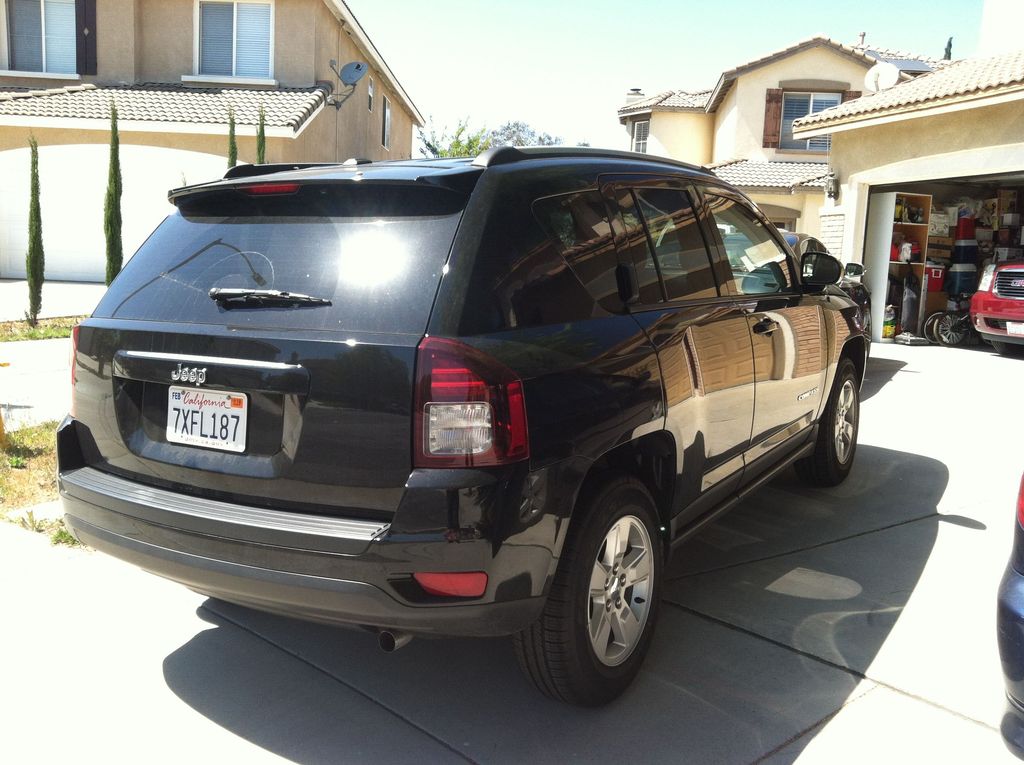
6. **Jeep Compass (2007–2017 Models)**On paper, the Jeep Compass appears to offer a compelling compact SUV package. However, in practical ownership and real-world performance, it has unfortunately garnered a reputation for significant reliability shortcomings. Owners have consistently reported a broad spectrum of issues, ranging from critical transmission failures to persistent electrical gremlins, often surfacing well within the first 100,000 miles of operation. This consistent pattern of failure undermines its initial appeal.
The vehicle’s interior often feels constructed from lower-quality materials, contributing to a perception of subpar build quality. A particularly problematic component is the continuously variable transmission (CVT) utilized in its earlier models, which has become widely known for its propensity for premature and costly failure. This issue is not isolated to a single problematic model year; rather, it reflects a decade-long trend of mechanical and structural mediocrity that has plagued the Compass.
Despite bearing the iconic “Jeep” badge and its associated rugged exterior aesthetic, the Compass frequently fails to deliver on the brand’s promise of durability and capability. Essential components like suspension parts exhibit rapid wear, leading to early and often expensive replacement needs that can quickly outstrip the vehicle’s modest initial purchase price. For consumers seeking a truly dependable long-term investment, the financial burden of potential repairs often makes a used Compass an economically unsound choice. Serious consideration should be given to more robust Jeep alternatives like the Wrangler or Grand Cherokee, which offer a far more reliable and rewarding ownership experience, ensuring that your investment does not become a recurring source of financial drain and operational frustration.
Car Model Information: 2022 Jeep Compass Latitude Lux
Name: Jeep Compass
Caption: 2019 Jeep Compass
Manufacturer: Jeep
Production: 2006–present
ModelYears: 2007–present
Class: Compact crossover SUV
BodyStyle: SUV
Layout: Front-engine, front-wheel-drive layout
Chassis: Unibody
Categories: 2010s cars, 2020s cars, All-wheel-drive vehicles, All Wikipedia articles written in American English, Articles with short description
Summary: The Jeep Compass is a compact crossover SUV, introduced in 2006 for the 2007 model year. The first generation Compass and Patriot, its rebadged variant, were among Jeep’s first crossover SUVs. The second-generation Compass debuted in September 2016 in Brazil and at the Los Angeles International Auto Show in November 2016, sharing a modified platform with the Renegade. It is positioned between the smaller Renegade and the larger Cherokee globally or the Commander in South America. The third-generation Compass debuted in May 2025, built on the STLA Medium by Stellantis, shared with other PSA Groupe vehicles.
Get more information about: Jeep Compass
Buying a high-performing used car >>>
Brand: Jeep Model: Compass
Price: $20,995 Mileage: 24,148 mi.
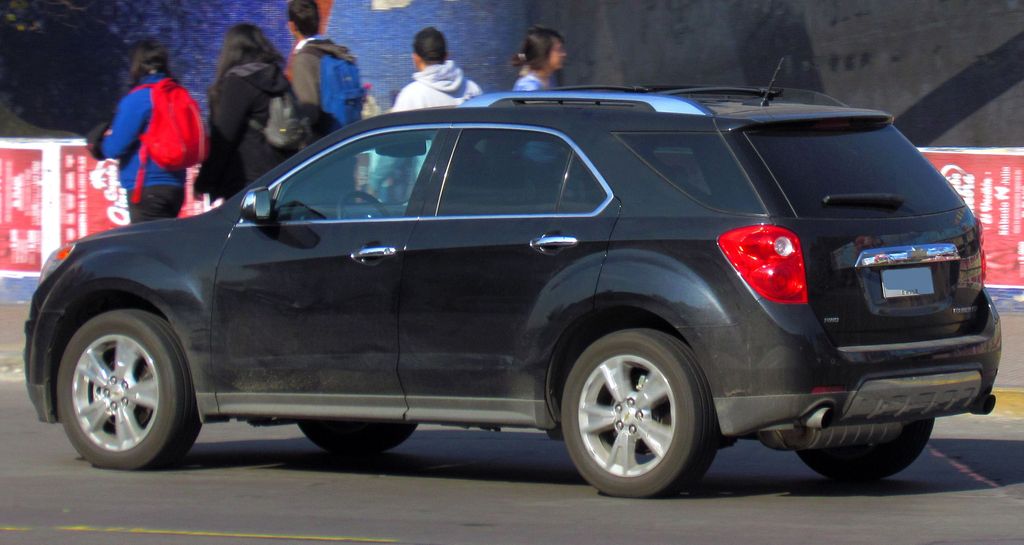
7. **Chevrolet Equinox (2010–2015 Models)**The Chevrolet Equinox, while initially carrying considerable promise, has unfortunately been persistently beset by a range of significant mechanical and design flaws, particularly those equipped with the 2.4L engine. A paramount concern among owners has been the issue of excessive oil consumption, with numerous reports indicating that some engines deplete as much as a quart of oil for every 1,000 miles driven. This alarming rate of consumption signals inherent engine design deficiencies, leading to accelerated wear and potential long-term damage.
Compounding this oil consumption problem are prevalent issues such as failing timing chains, recurring air conditioning system malfunctions, and unpredictable engine stalls. These critical mechanical failures collectively create a troubling narrative of consistent frustration for owners. It is not uncommon for some Equinox owners to face the daunting prospect of complete engine replacement well before their vehicles even reach the 100,000-mile mark, an expense that can be financially crippling for budget-conscious consumers.
Furthermore, transmission-related problems are a widespread concern, especially in the earlier models within this production range, adding another layer of unreliability. The use of inexpensive interior components, which often show premature wear, along with questionable electronic systems, transforms the ownership experience into what many describe as “babysitting” their SUV, constantly vigilant for the next issue. While a used Equinox might appear to be an attractive initial bargain, its long-term cost of ownership, heavily influenced by frequent and costly repairs, can escalate rapidly and unexpectedly. Unless the vehicle is acquired at an exceptionally low price and the buyer is prepared to accept a high degree of financial risk and potential inconvenience, it is generally advisable to avoid these models. The verdict is clear: while the Chevy Equinox might be affordable upfront, it is highly likely to extract a significant financial and emotional toll from its owner over time, manifesting in substantial cash outlays, considerable lost time, and persistent operational headaches.
Car Model Information: 2023 Chevrolet Equinox Premier
Name: Chevrolet Equinox
Manufacturer: General Motors
Aka: ubl
Production: 2004–present
ModelYears: 2005–present
Class: Mid-size crossover SUV
BodyStyle: Sport utility vehicle
Layout: Transverse engine,Front-engine, front-wheel-drive layout
Predecessor: ubl
Categories: 2000s cars, 2010s cars, 2020s cars, All-wheel-drive vehicles, All Wikipedia articles written in American English
Summary: The Chevrolet Equinox is a crossover SUV introduced by Chevrolet in 2004 for the 2005 model year. It was intended to replace the North American Chevrolet Tracker and Chevrolet S-10 Blazer. The third-generation Equinox also replaced the first-generation Chevrolet Captiva.
An all-electric battery-powered (BEV) version called the Equinox EV was introduced in 2022 with sales starting in 2023 for the 2024 model year. It adopts a separate design and underpinnings from the internal combustion engine powered Equinox.
Get more information about: Chevrolet Equinox
Buying a high-performing used car >>>
Brand: Chevrolet Model: Equinox
Price: $28,990 Mileage: 12,043 mi.
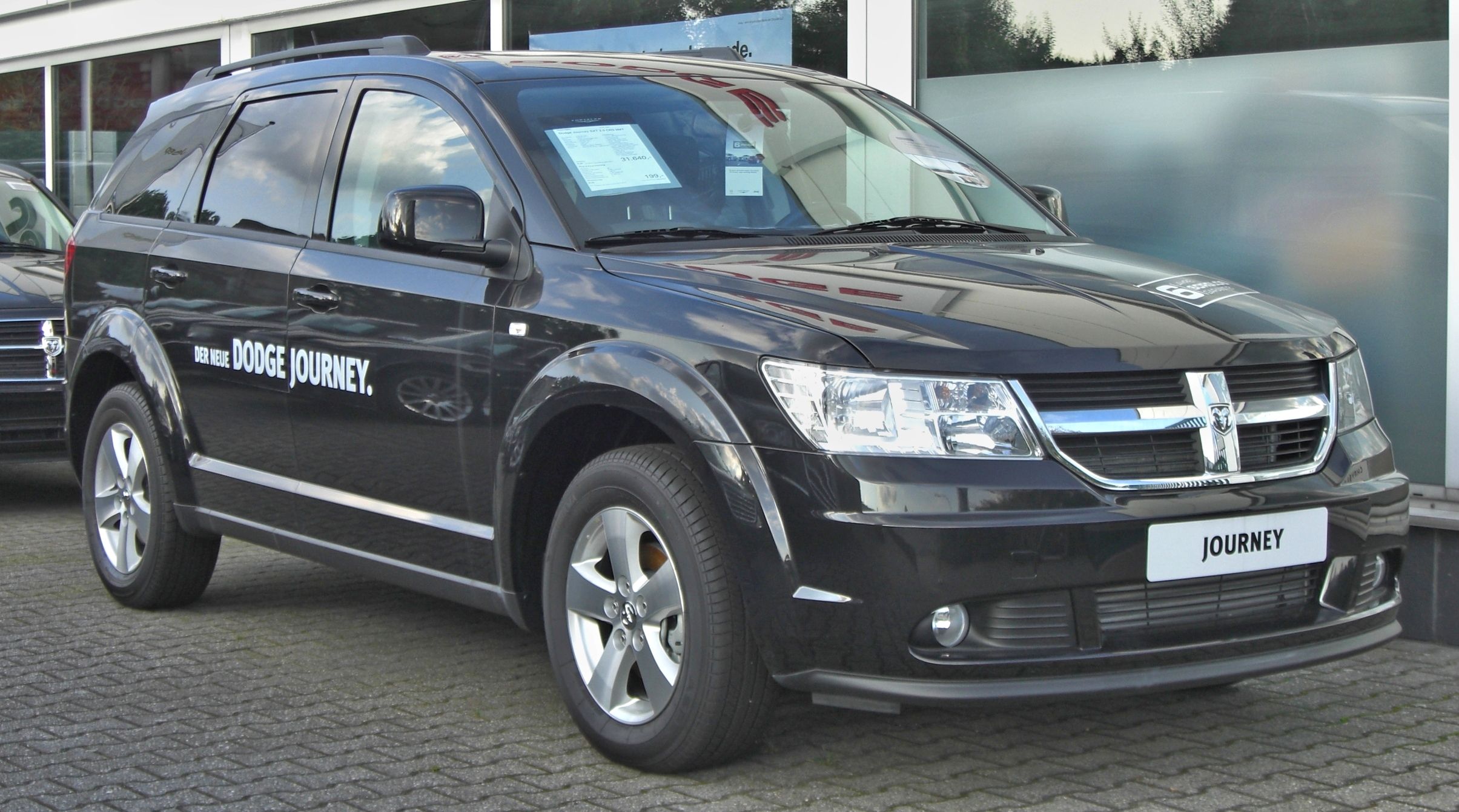
8. **Dodge Journey (2009–2020 Models)**The Dodge Journey made an ambitious attempt to serve as a multifaceted vehicle, aiming to fulfill roles as a family hauler, a budget-friendly SUV, and an adaptable cargo mover. However, in its execution, it ultimately became largely forgettable and a source of considerable frustration for its owners. The fundamental design often fell short, failing to deliver on the essential promises of reliability and enduring utility.
Both the 4-cylinder and 6-cylinder engine options frequently prove to be underpowered, hindering performance and overall driving satisfaction. Owners commonly register complaints concerning a litany of issues, including pervasive electrical problems that can be difficult and costly to diagnose, the consistent use of cheap interior finishes that deteriorate quickly, and recurrent failures within the HVAC (heating, ventilation, and air conditioning) systems. These issues collectively detract significantly from the ownership experience, diminishing both comfort and convenience.
The Dodge Journey also carries the unfortunate distinction of being recognized as one of the least reliable midsize SUVs within its generation. Common and recurring problems include transmission failures, premature brake wear, and persistent suspension issues. A significant concern for potential buyers is that despite its presence on the market for over a decade, the vehicle never underwent substantial improvements; instead, Dodge largely continued to market the same fundamentally mediocre design with only minor, superficial tweaks, failing to address the core reliability concerns. Even as a used vehicle, the Journey does not represent a prudent financial decision. Its value depreciates rapidly, leading to abysmal resale value, and the accumulation of repair bills can quickly surpass any initial savings, making it a poor long-term investment. In summary, the Dodge Journey may present an outwardly affordable proposition, but it consistently proves to be a profound long-term letdown for its owners, consuming more in maintenance and repairs than its initial perceived value.
Car Model Information: 2019 Dodge Journey GT
Name: Dodge Journey
Caption: 2012 Dodge Journey
Manufacturer: Dodge
Aka: Fiat Freemont,Dodge JC (Japan),Dodge JCUV (China)
Production: 2008–2020
ModelYears: 2009–2020,2011–2015 (Freemont)
Assembly: Toluca, Mexico
Designer: Ryan Nagode
Class: Mid-size crossover SUV
BodyStyle: SUV
Platform: Mitsubishi GS platform
Related: Chrysler 200,Chrysler Sebring,Dodge Avenger
Layout: Front-engine, front-wheel-drive layout
Engine: ubl
Transmission: Ultradrive#40TES/41TES
Wheelbase: 2890 mm
Abbr: on
Order: flip
Length: 192.4 in
Width: 72.2 in
Height: 66.6 in
Weight: 3818 lb
Predecessor: Fiat Ulysse,Fiat Croma
Successor: Dodge Journey (2021)
Categories: 2010s cars, 2020s cars, All-wheel-drive vehicles, All articles with dead external links, All articles with unsourced statements
Summary: The Dodge Journey is a mid-size crossover SUV manufactured and marketed by Fiat Chrysler Automobiles’ Dodge brand for model years 2009 to 2020 over a single generation, with a facelift for the 2011 model year. The Journey was styled by Ryan Nagode, and was marketed globally in both left- and right-hand drive, including as the Fiat Freemont.
Internally identified as the JC49, the Journey shares FCA’s global D-segment platform with the Dodge Avenger and a nearly identical wheelbase to the outgoing short-wheelbase (SWB) Dodge Caravan.
Having debuted at the 2007 Frankfurt Motor Show, the Journey subsequently appeared at the 2009 Frankfurt Motor Show. All models were manufactured in Mexico at FCA’s Toluca Assembly facility, with just over 1.1 million manufactured before production ended in 2020.
Get more information about: Dodge Journey
Buying a high-performing used car >>>
Brand: Dodge Model: Journey
Price: $14,900 Mileage: 68,430 mi.
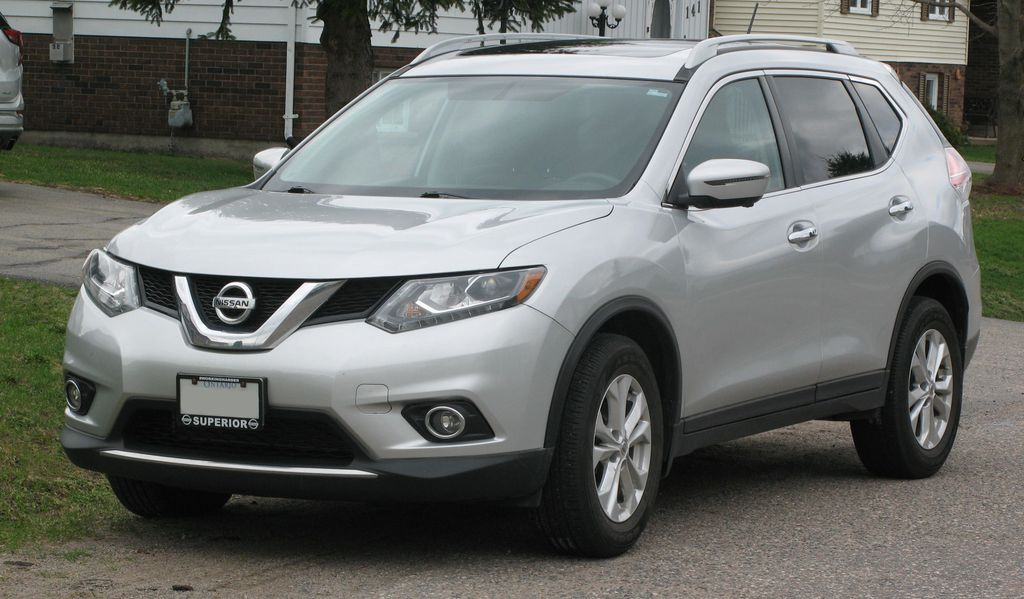
9. **Nissan Rogue (2013–2016 Models)**The Nissan Rogue, particularly within the 2013–2016 model years, possessed the potential to be a highly successful compact SUV. It featured appealing aesthetics, delivered commendable fuel economy figures, and integrated a range of modern features that attracted a broad consumer base. However, its trajectory was severely derailed by one overwhelming and critical flaw: the continuously variable transmission (CVT). This particular transmission unit has accumulated an exceptionally poor track record for reliability and operational integrity.
Owners of these Rogue models have consistently reported a distressing array of CVT-related malfunctions, including jerking, slipping, and frequent overheating issues. The widespread nature of these problems compelled Nissan to take significant measures, including extending warranties and issuing numerous service bulletins, in an attempt to address the deluge of complaints. Once the CVT begins to fail, which commonly occurs around the 80,000 to 100,000-mile mark, owners are faced with an estimated repair cost ranging from $3,000 to $4,000. For an SUV initially purchased on a budget, such a substantial repair expense renders the vehicle economically unviable, often exceeding a significant portion of its current market value.
Beyond the critical transmission issues, the vehicle’s interior materials are known to wear out quickly, diminishing the cabin’s perceived quality over time. The infotainment system is frequently described as clunky and unintuitive, and road noise levels within the cabin are notably high, detracting from the overall driving experience. These pervasive issues often lead owners to dispose of their vehicles out of sheer frustration, long before reaching the 150,000-mile mark. Unless a Nissan Rogue from this problematic period is acquired for a remarkably low price and has demonstrably received a complete, brand-new transmission replacement, it is strongly advised that potential buyers seek other, more reliable alternatives, as the inherent risks and costs associated with its CVT system are simply too high to justify for long-term ownership.
Car Model Information: 2022 Nissan Rogue SL
Name: Nissan Rogue
Caption: 2023 Nissan Rogue SV (US)
Manufacturer: Nissan
Aka: Nissan X-Trail
Production: 2007–present
ModelYears: 2008–present
Class: Compact crossover SUV
BodyStyle: SUV
Layout: Front-engine, front-wheel-drive layout
Predecessor: Unbulleted list
Categories: 2010s cars, All-wheel-drive vehicles, All articles lacking reliable references, Articles lacking reliable references from November 2017, Articles with short description
Summary: The Nissan Rogue is a compact crossover SUV produced by the Japanese automobile manufacturer Nissan. It made its debut in October 2007 for the 2008 model year. Beginning in 2013 for the 2014 model year, the model has been merged with the X-Trail sold outside the North American market, making them identical.
As of 2023, the Rogue was manufactured at the Nissan Smyrna Assembly Plant in Tennessee, United States and at the Nissan Motor Kyushu plant in Kanda, Fukuoka, Japan. Between August 2014 and March 2020, it was also built at the Renault Samsung Motors plant in Busan, South Korea under contract.
Get more information about: Nissan Rogue
Buying a high-performing used car >>>
Brand: Nissan Model: Rogue
Price: $21,614 Mileage: 58,342 mi.
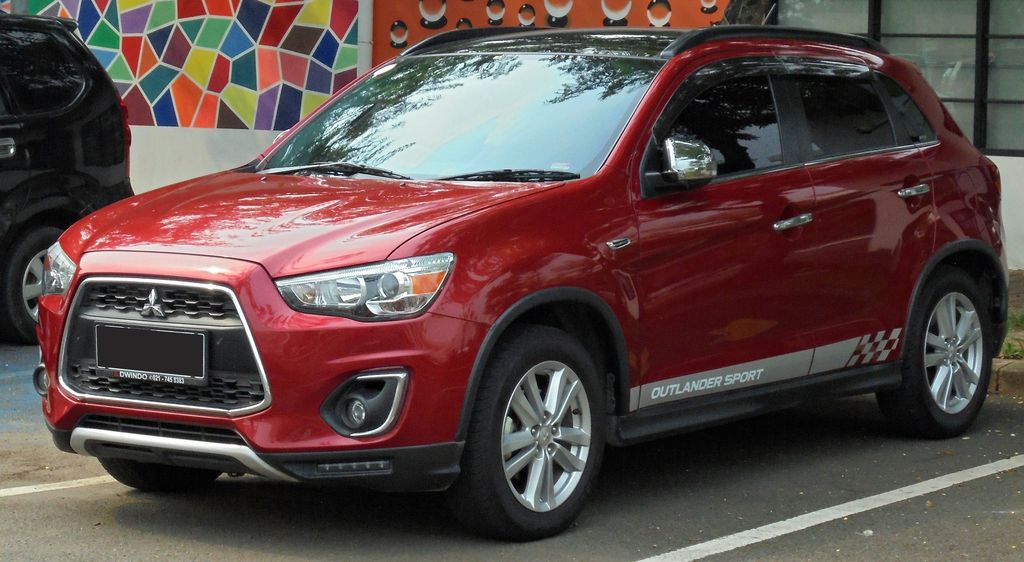
10. **Mitsubishi Outlander Sport (2011–2017 Models)**The Mitsubishi Outlander Sport might initially appear to be a sensible choice for those operating on a restricted budget, offering an attractive entry point into the SUV market. However, a deeper examination of its performance and long-term reliability reveals a vehicle consistently hampered by chronic quality control issues and fundamental design weaknesses. Its promise of affordability frequently comes at the expense of sustained dependability.
The continuously variable transmission (CVT) employed in these models is widely criticized for being unrefined in its operation, failing to deliver a smooth driving experience. Concurrently, the engine is frequently described as both noisy and underpowered, contributing to a less-than-satisfactory performance profile. Reflecting these significant shortcomings, the vehicle’s reliability ratings have remained consistently below average across various independent assessments. Owners have detailed a variety of mechanical failures, ranging from prematurely blown suspension components to inexplicable and problematic electrical malfunctions, indicating a pattern of systemic issues rather than isolated incidents.
Compounding these operational and mechanical concerns, the interior materials often feel notably inexpensive, further detracting from the overall quality perception. The resale value of the Mitsubishi Outlander Sport is consistently dismal, severely impacting its long-term financial viability for owners. Even with diligent adherence to regular maintenance schedules, these vehicles simply do not exhibit the robust durability required to hold up well over an extended period. It is highly probable that owners will find themselves spending an inordinate amount of time and financial resources in repair shops once the vehicle approaches or surpasses the 100,000-mile mark, rather than enjoying reliable time on the road. For consumers prioritizing a durable and affordable SUV, there are unequivocally superior alternatives available on the market. The Outlander Sport, despite its rugged appearance, falls short in both driving performance and long-term longevity, making it an ill-advised investment for those seeking lasting value.
When navigating the complexities of the used SUV market, the allure of the lowest price tag can be incredibly tempting. However, it is crucial to understand that an initial bargain can quickly transform into a significant financial burden if the chosen SUV is prone to premature failures. Such a scenario inevitably results in far greater long-term costs than any upfront savings, turning what was hoped to be a smart purchase into a regretful one. This underscores the paramount importance of discerning which models are genuinely engineered for enduring reliability versus those that are merely cleverly disguised sources of future mechanical headaches.
Our comprehensive analysis has identified a select group of affordable SUVs that have consistently demonstrated their unwavering commitment to longevity. The Toyota RAV4, Honda CR-V, Subaru Forester, Lexus RX 350, and the specific 2.5L engine variant of the Ford Escape have all unequivocally proven their worth through consistently high mileage reliability, economically sensible upkeep requirements, and a track record of satisfied, long-term owners. These vehicles stand as testaments to sound engineering and a consumer-centric design philosophy, offering genuine peace of mind.
Car Model Information: 2024 Hyundai PALISADE Calligraphy Night Edition
Categories: All set index articles, Articles with short description, Cars introduced in 2010, Mitsubishi Motors vehicles, Set index articles on cars
Summary: The Mitsubishi Outlander Sport is an automobile nameplate used by the Japanese automobile manufacturer Mitsubishi Motors since 2010 for several subcompact crossover SUV models:
Mitsubishi ASX, marketed as the Outlander Sport in the United States, Argentina, Brazil, and Indonesia since 2010
Mitsubishi Xforce, marketed as the Outlander Sport in the Americas and Africa since 2023
Get more information about: Mitsubishi Outlander Sport
Buying a high-performing used car >>>
Brand: Mitsubishi Model: Outlander Sport
Price: $39,658 Mileage: 22,633 mi.
Conversely, models such as the Jeep Compass, Chevrolet Equinox, Dodge Journey, Nissan Rogue, and Mitsubishi Outlander Sport, despite their apparent affordability at the point of sale, tend to succumb to various issues much earlier in their lifespans. Their documented histories include frequent mechanical breakdowns, often leading to significantly higher maintenance expenditures and persistent operational frustrations. For consumers operating on a constrained budget and prioritizing a vehicle that will reliably serve them for years to come, the prudent course of action is to stick with the established, proven performers. It is always wise to meticulously review a vehicle’s service history, diligently avoid models known for problematic engines or transmissions, and resist the temptation of superficial features if the underlying mechanical integrity of the car is compromised. Ultimately, the most advantageous SUV is not necessarily the one equipped with the most advanced dashboard or the most eye-catching exterior; rather, it is the one that remains steadfastly operational and dependable precisely when you need it most, ensuring your investment delivers consistent utility and unwavering peace of mind over its entire lifespan.


